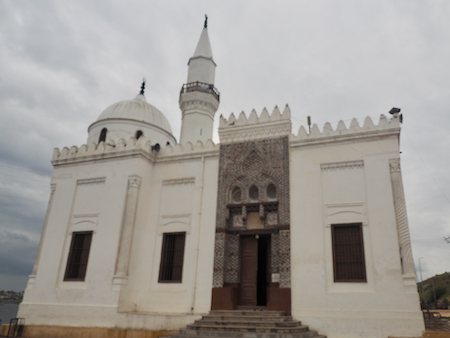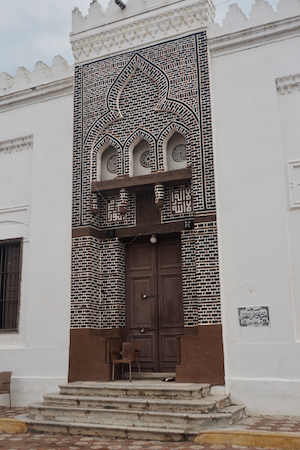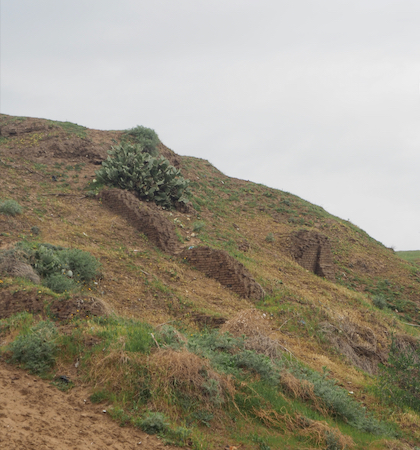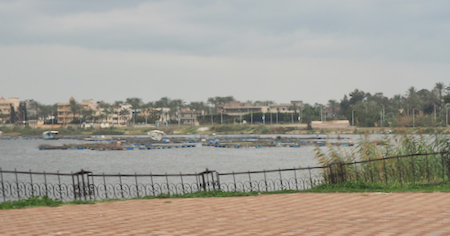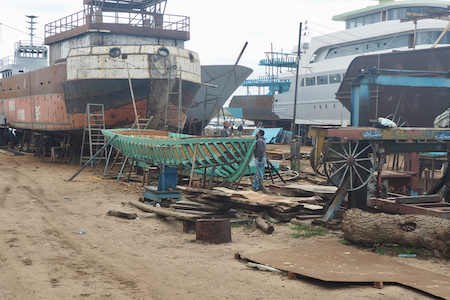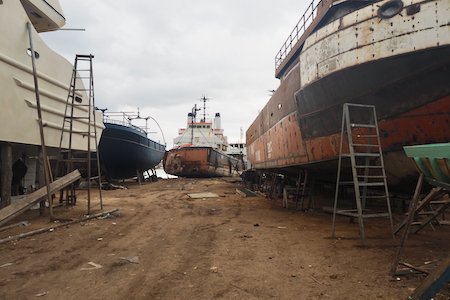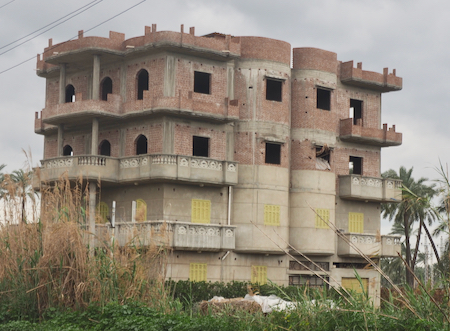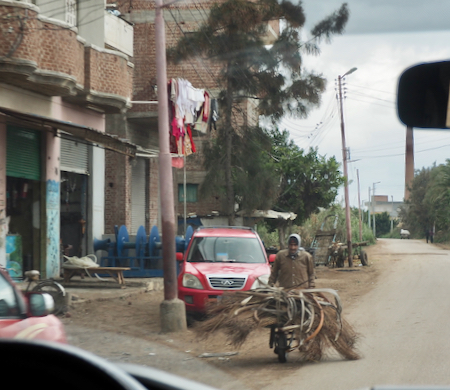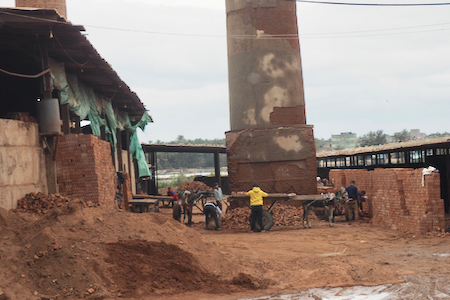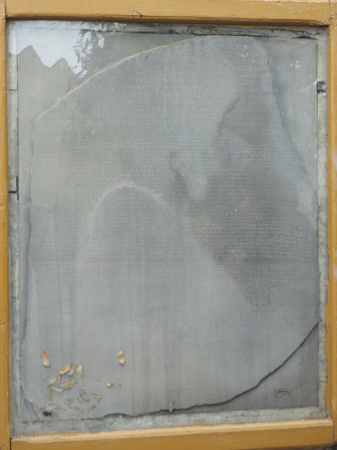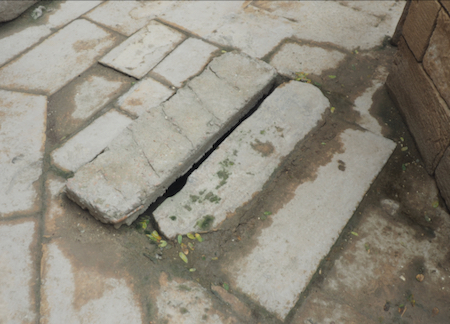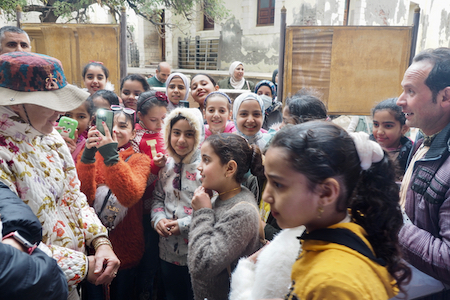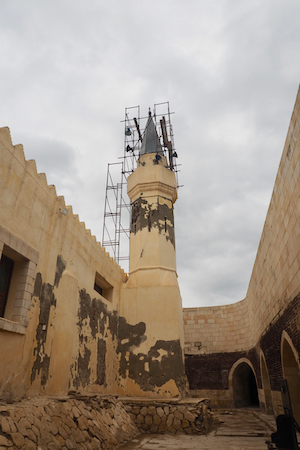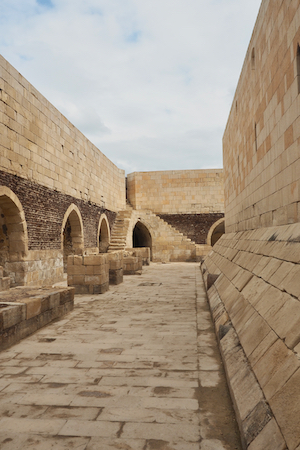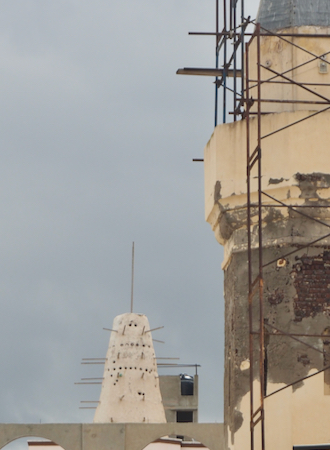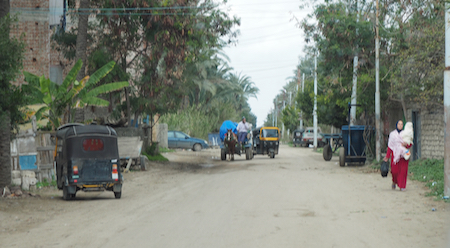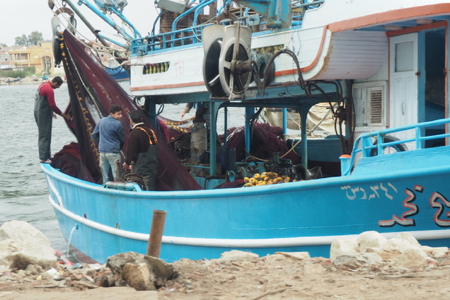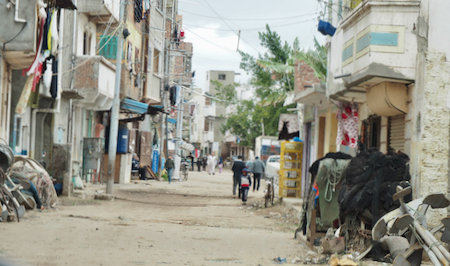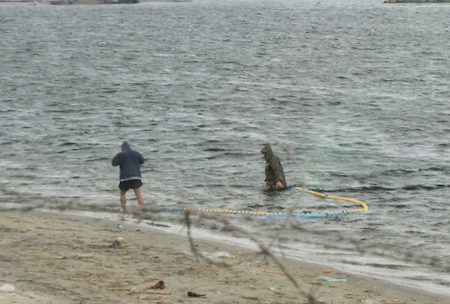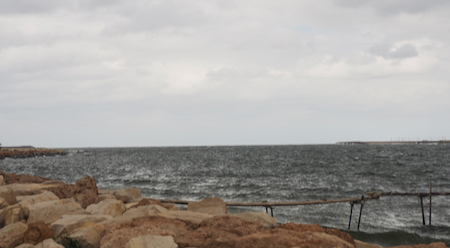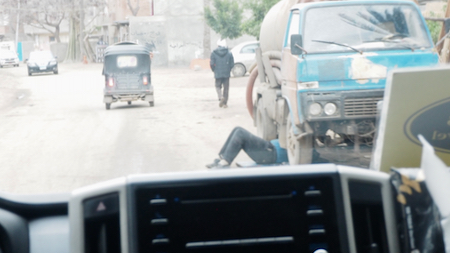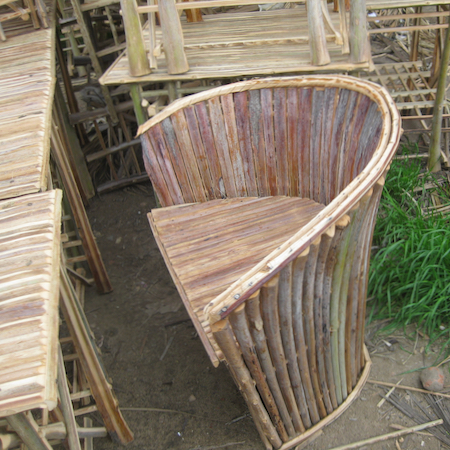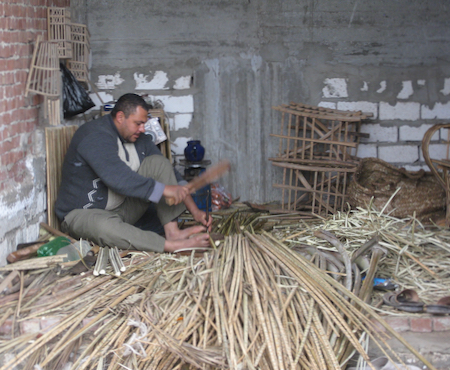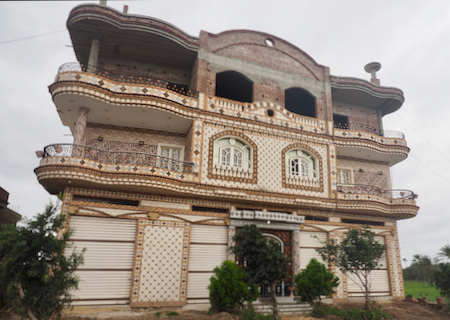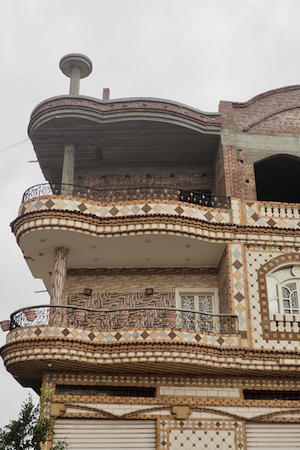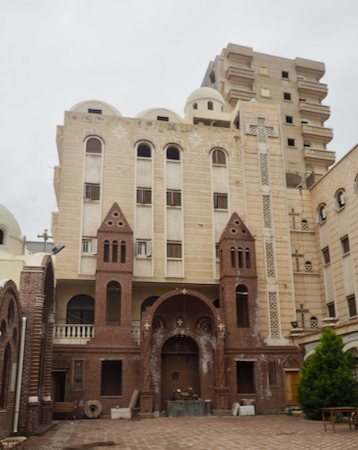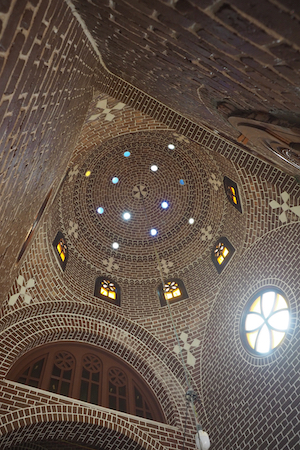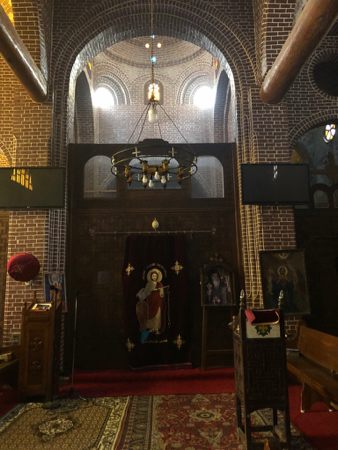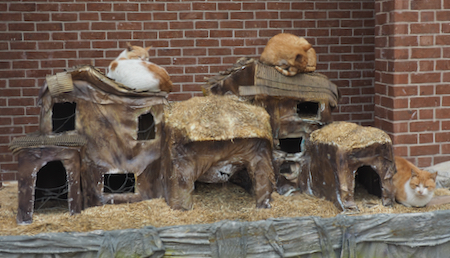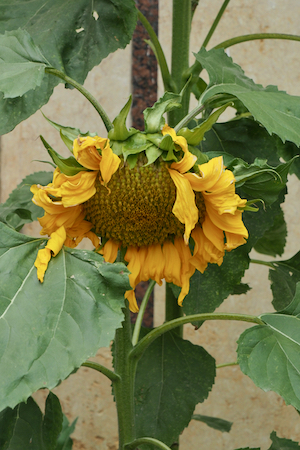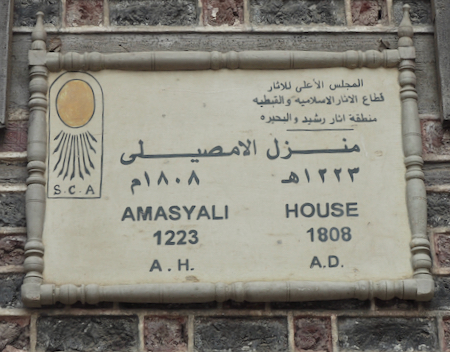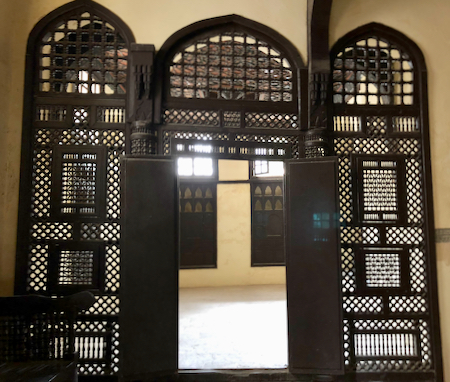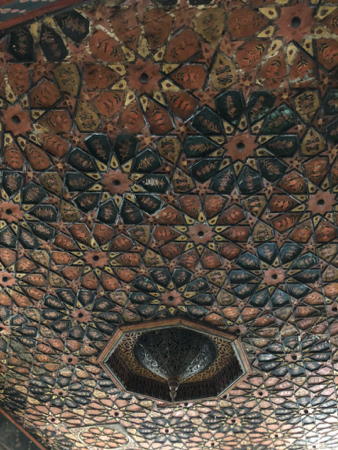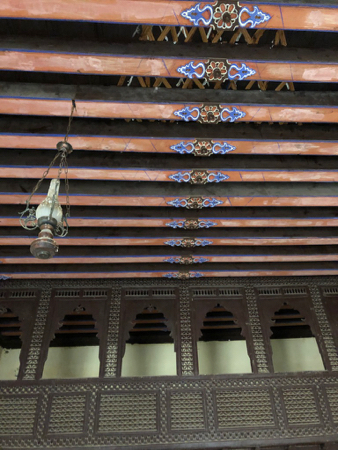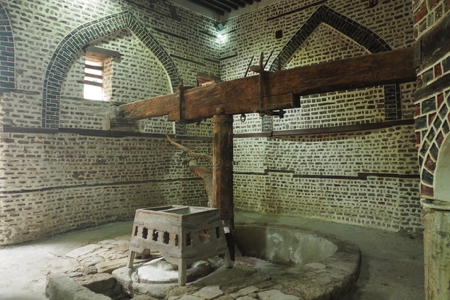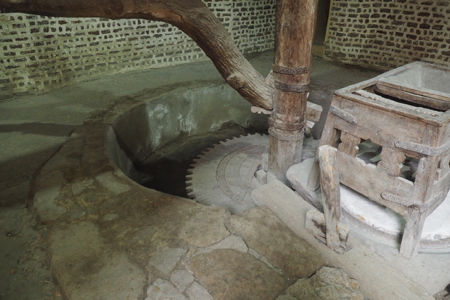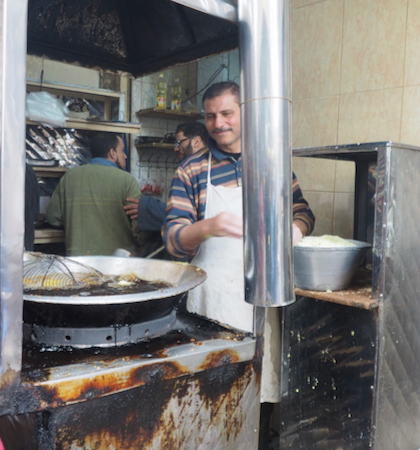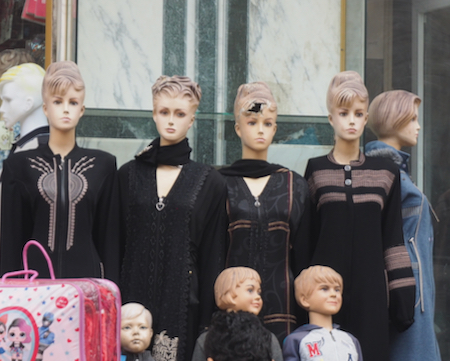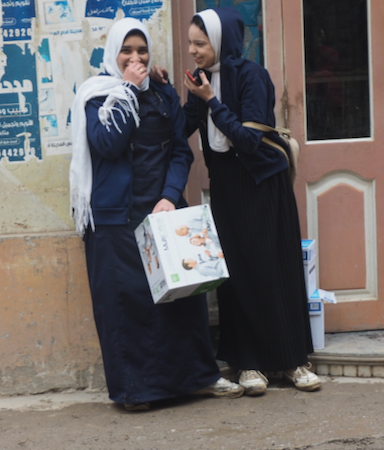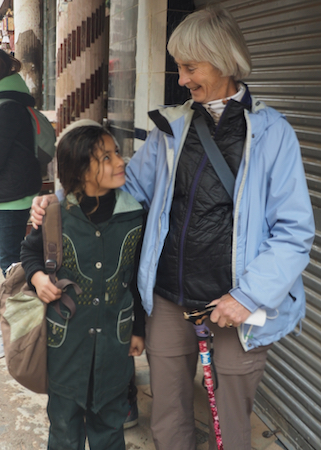Sun., 3/13/22 - Rosetta
Rosetta is only 40 miles from Alexandria but the ride can take 90 minutes because of traffic and dirt roads. It rained this morning so everywhere we went, we drove or walked through mud.
Rosetta has always been a seaport where the West Nile meets the Mediterranean Sea. As we approached the city, we could see numerous fish farms in the Nile. They grow mostly Nile perch but we saw all kinds of fish in the fish markets.
Our first stop was at a mosque along the Nile. It is constructed of Rosetta bricks - red bricks and black short bricks which form geometric designs. We did not go in, but looked at the special architecture with the bricks. Across the street was a hillside with exposed mud bricks which are ruins of Roman brick buildings. The hill has not been excavated.
Abo Mandor Historical Mosque
Abo Mandor Historical Mosque
Roman ruins on the hillside across from the Abo Mandor Mosque
Our driver let us get out at a ship building yard. (I think he may have lived in Rosetta because he knew where to show us unique things.) Two men were working on rebuilding a wooden boat. Next to it was a large new cabin cruiser. There were other hulls there, all different and in different stages of repair or construction. Interesting. Rosetta is still a hub of ship building especially of private yachts. Many are sold to Frenchmen.
Ship yard
Under construction
Street scene
We passed a dozen brick factories. The Rosetta area has good clay to make oven-baked bricks. Some are red, others are gray shades.
The Citadel on the Nile - Fort Julien - was where the Rosetta stone was found by French soldiers in 1799 during Napoleon’s campaign in Egypt. When they started expanding the 17th century fort built by the Mamelukes to fight off pirates from Cypress, the stone was uncovered.
At the fort we saw the hole where the Rosetta Stone stele was buried (it is now in the British Museum in London, where we saw it a couple years ago). As we were arriving, three bus loads of 10 to 12 year old school kids came in and chaos ensued. The girls were so fascinated by us that they engulfed us and wanted to take selfies with each of us. We attracted more attention than the stone copy we were trying to look at. Meanwhile the boys were chasing around climbing stairs, etc. It was an event!
Photo of the Rosetta stone (lots of reflection!)
Hole where the Rosetta was supposedly found
School kids and American tourists - chaos!
Tower at Fort Julien
Fort Julien
Pigeon tower in a yard beyond the fort
Street scene
Fishermen working on the nets
Street scene
Interesting way to fish - walking along in shallow water dragging a net
Our driver took us out to the end of the Nile to see the meeting of the waters with the Mediterranean. You could smell the salt water in the tidal flow.
Would you fix your car this way on a busy street?
More palm stem furniture
Another man using his feet in the process of working with palm stems
Fancy new house
House details
During our walking experience in the city, we stopped to look at St. George's Egyptian Orthodox Coptic Church. It is made of red brick outside and inside there are two center pillars made of red granite. Women and men sit separated in the church and there is a balcony for women. There are no paintings or frescoes or statues. Icons are on hanging textiles.
St. George's Egyptian Coptic Church
St. George's Egyptian Coptic Church
St. George killing the dragon
Interesting structure in the church yard - at least the cats like it
Sunflower in the church yard
Rosetta was a rich trade center from the 10th to the 19th centuries. There remain several houses that belonged to rich merchants. The government is trying to preserve these houses.
On the first floor is the “waiting” room. From there, guests would then be invited upstairs to the living area. Women were hidden in balconies. Orchestras would provide entertainment.
The carved wood and inlaid designs of ivory and mother of pearl were very intricate and masterful. A typical design is the eternal or infinity star - a star in the middle with six or eight points and surrounded by a continuing pattern of the star.
Wood work in the merchant's house
Ornate ceiling
Balcony where the women sat to watch what was going on.
Old mill in the building adjacent to the merchant's house
Old mill
Making falafel - deep-fried balls or patties made from chickpeas or fava beans, sometimes both, plus fresh herbs and spices
Store mannequins
More school girls fascinated by American tourists
One cute girl followed Gale, staring with her beautiful eyes
| Return to Top | Return to Itinerary | Return to Trips page to view other trips | Return to Dreamcatcher Home Page |
